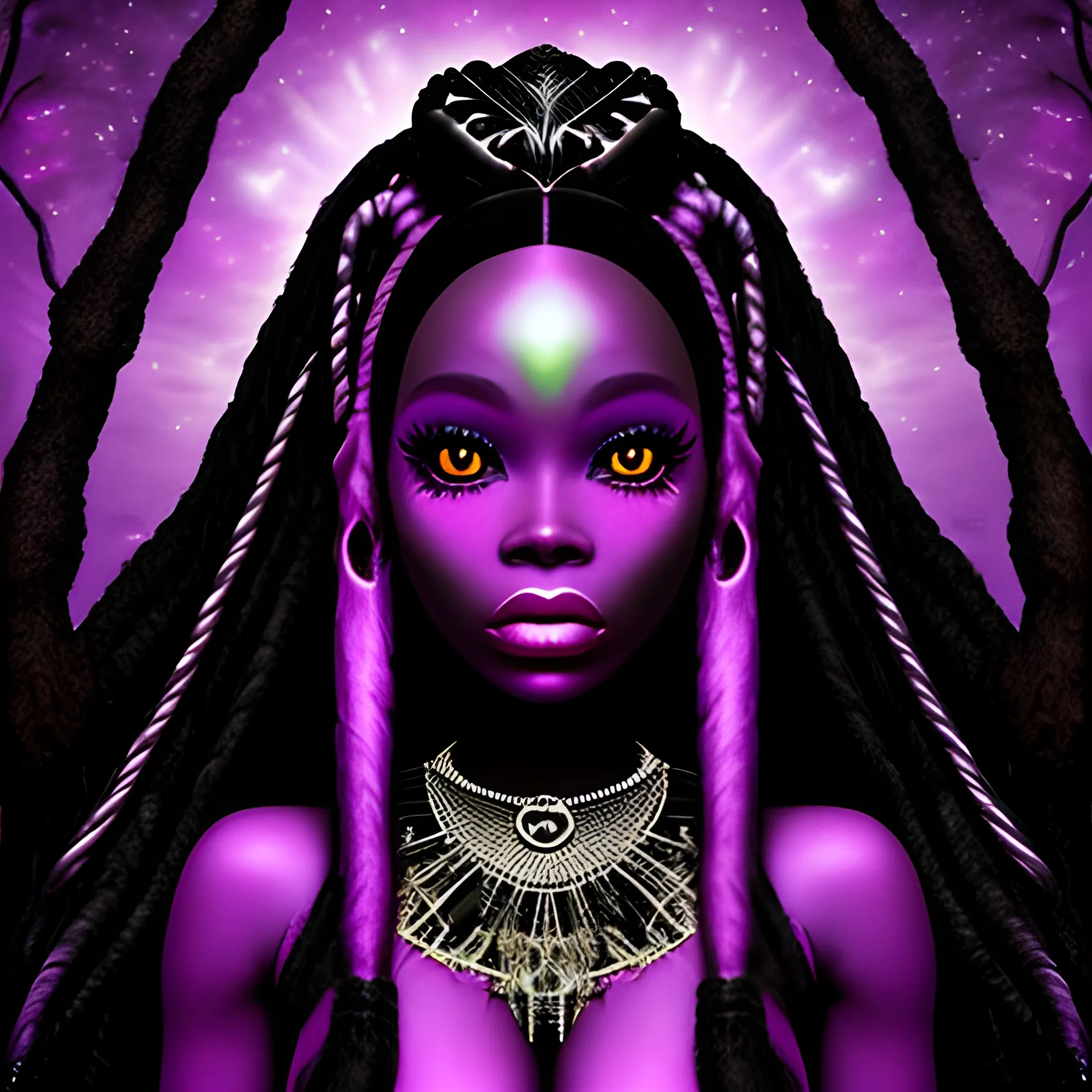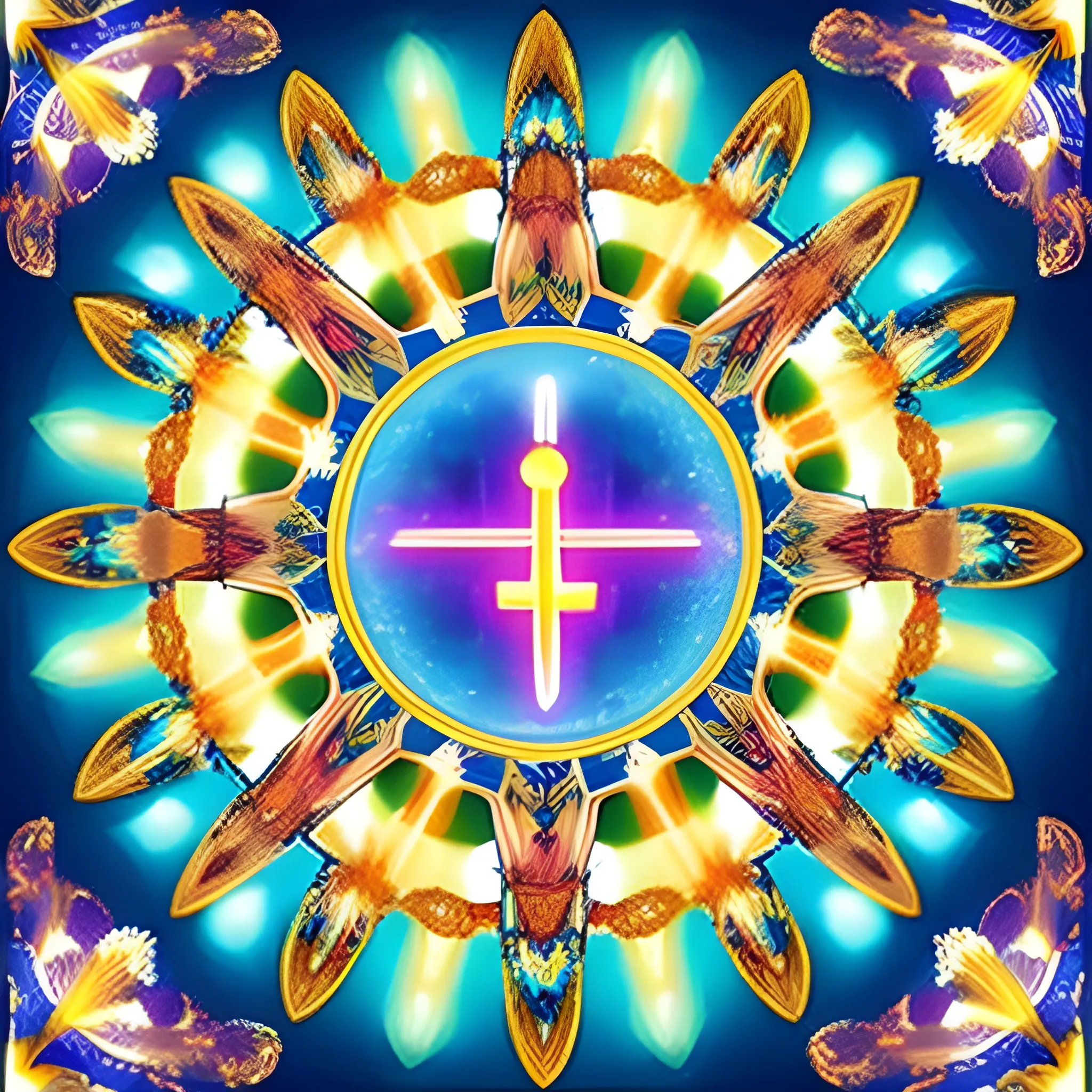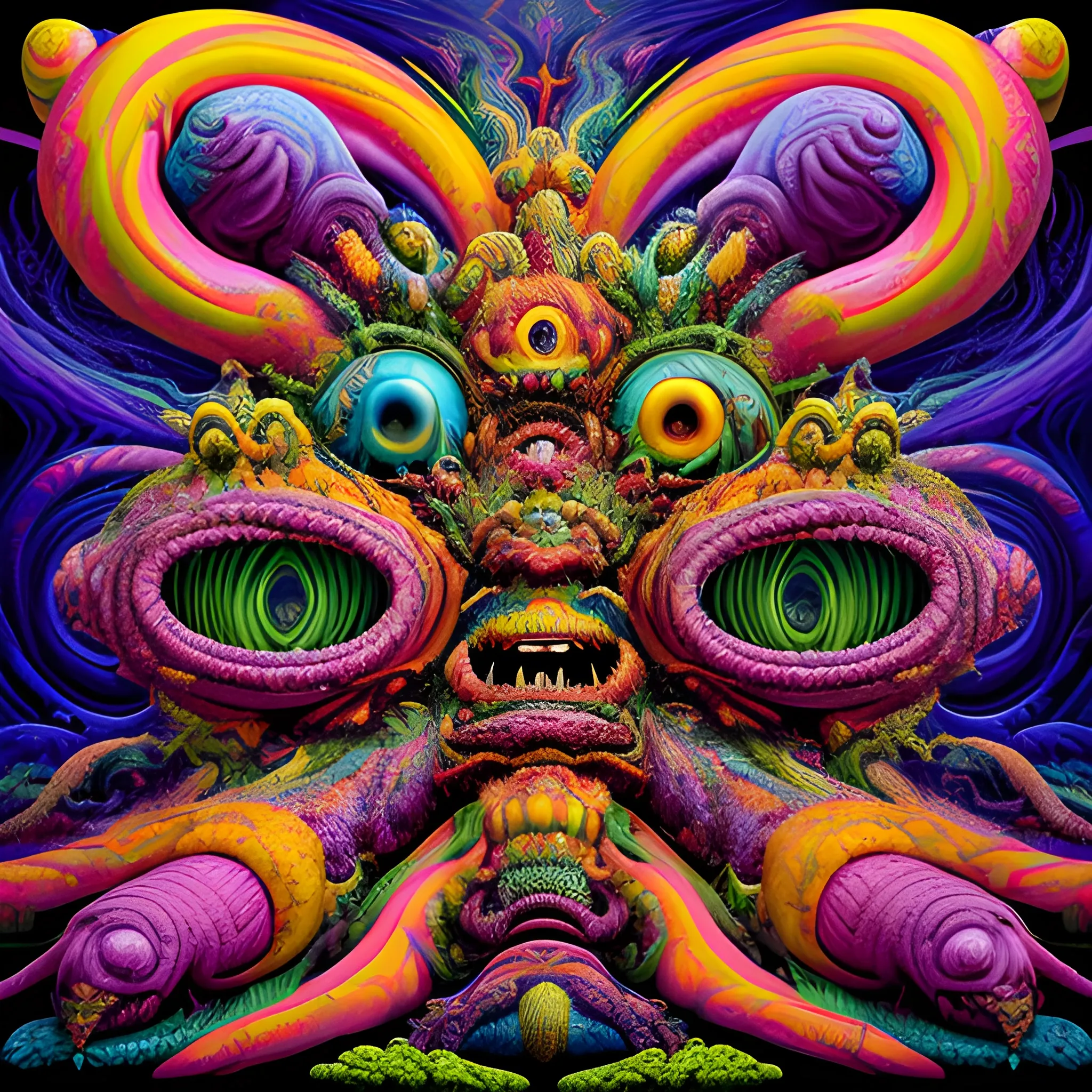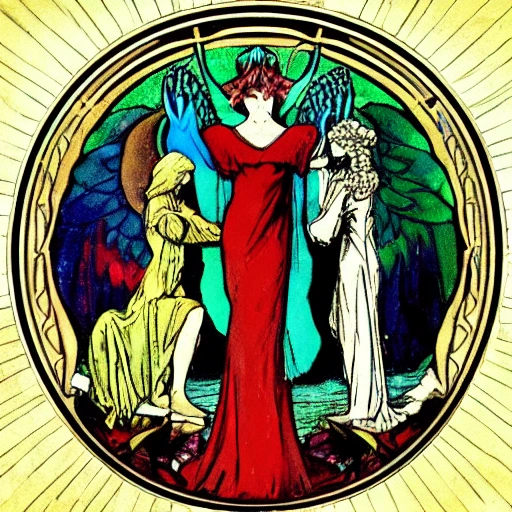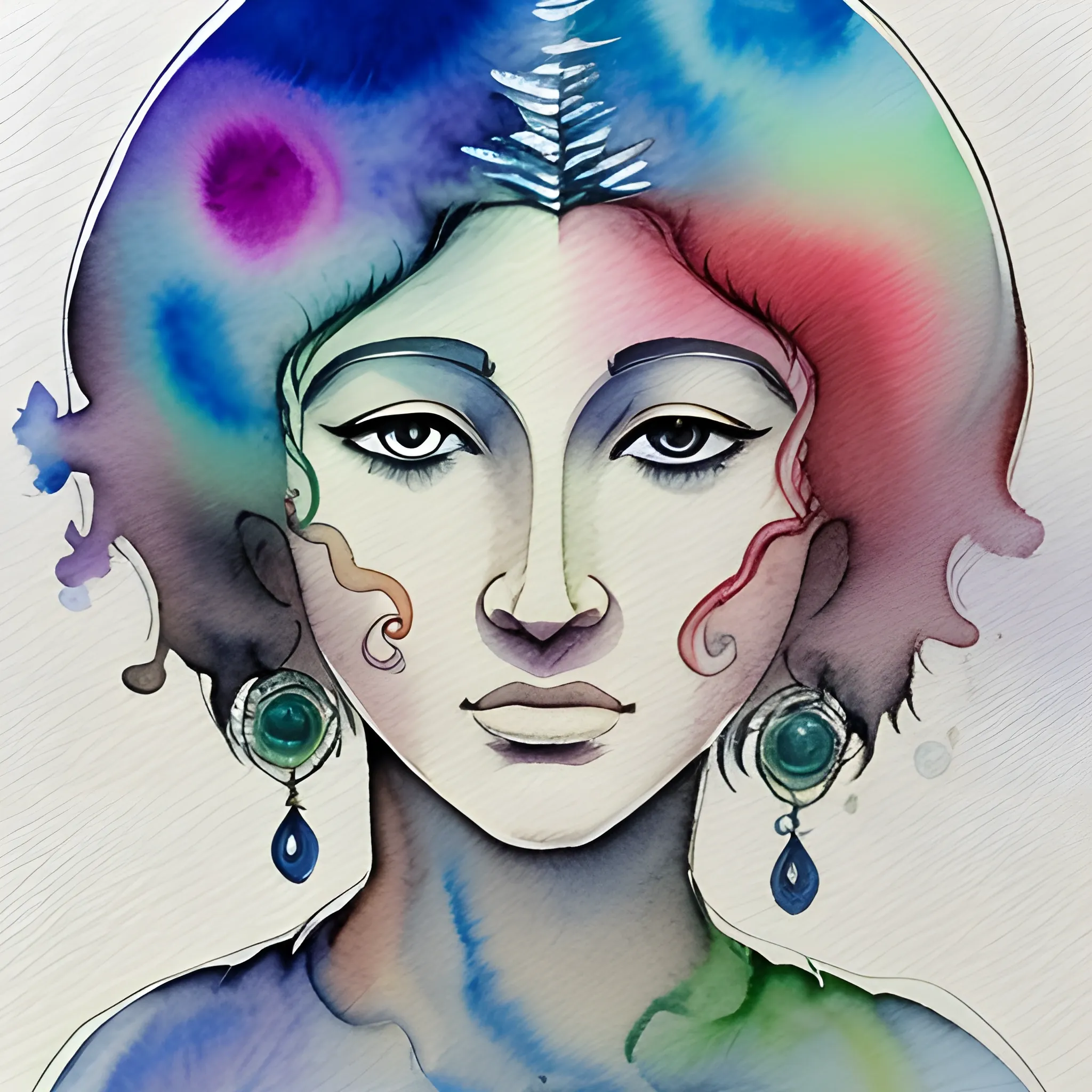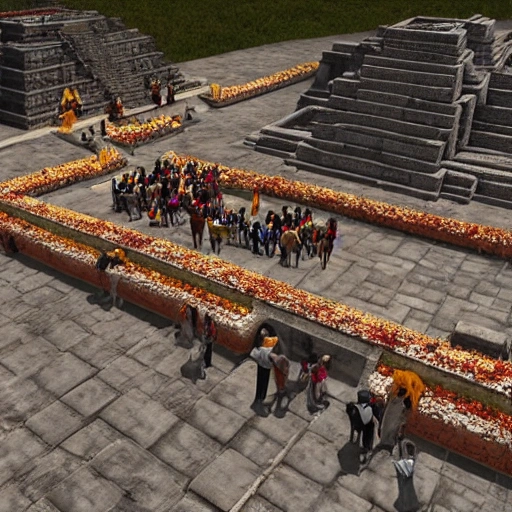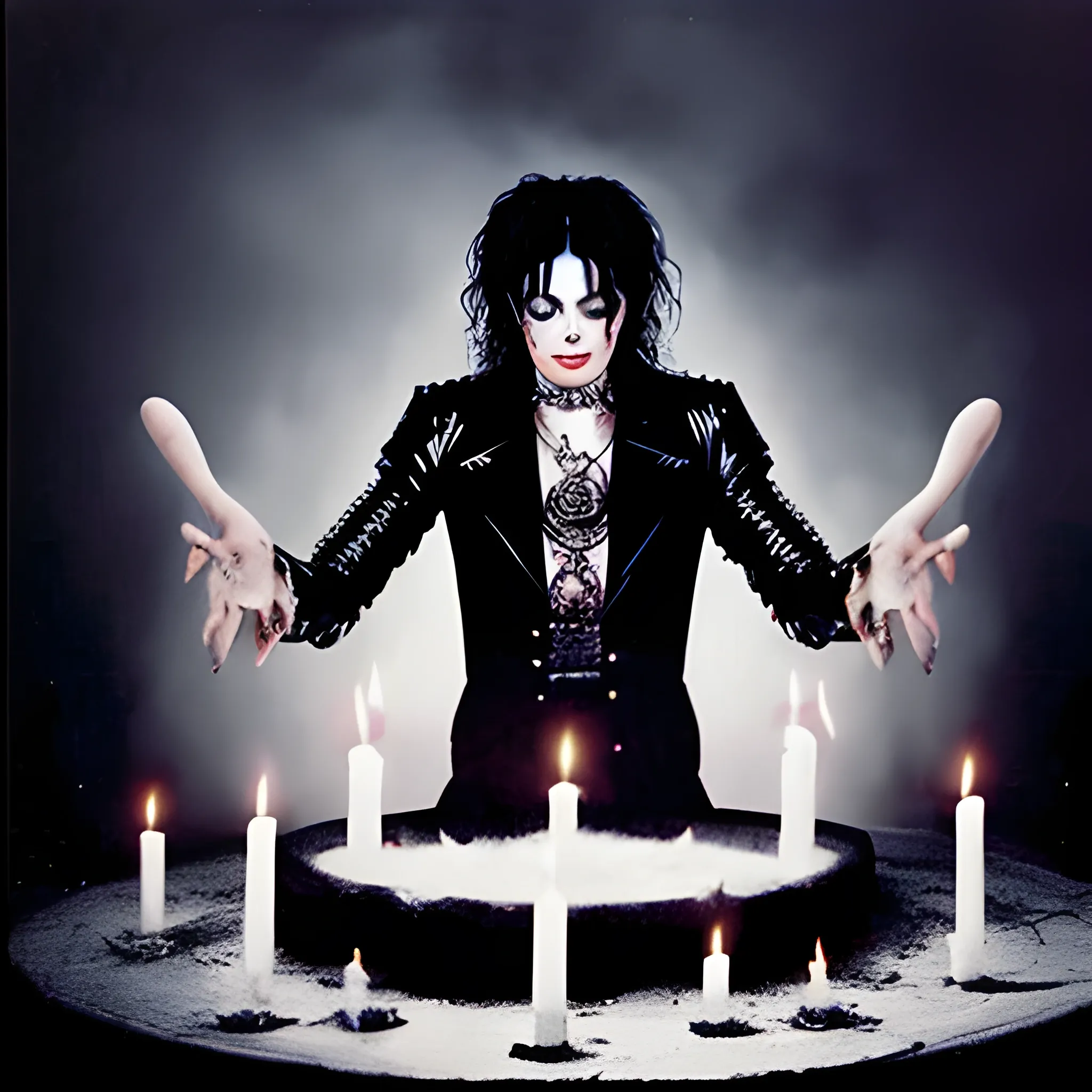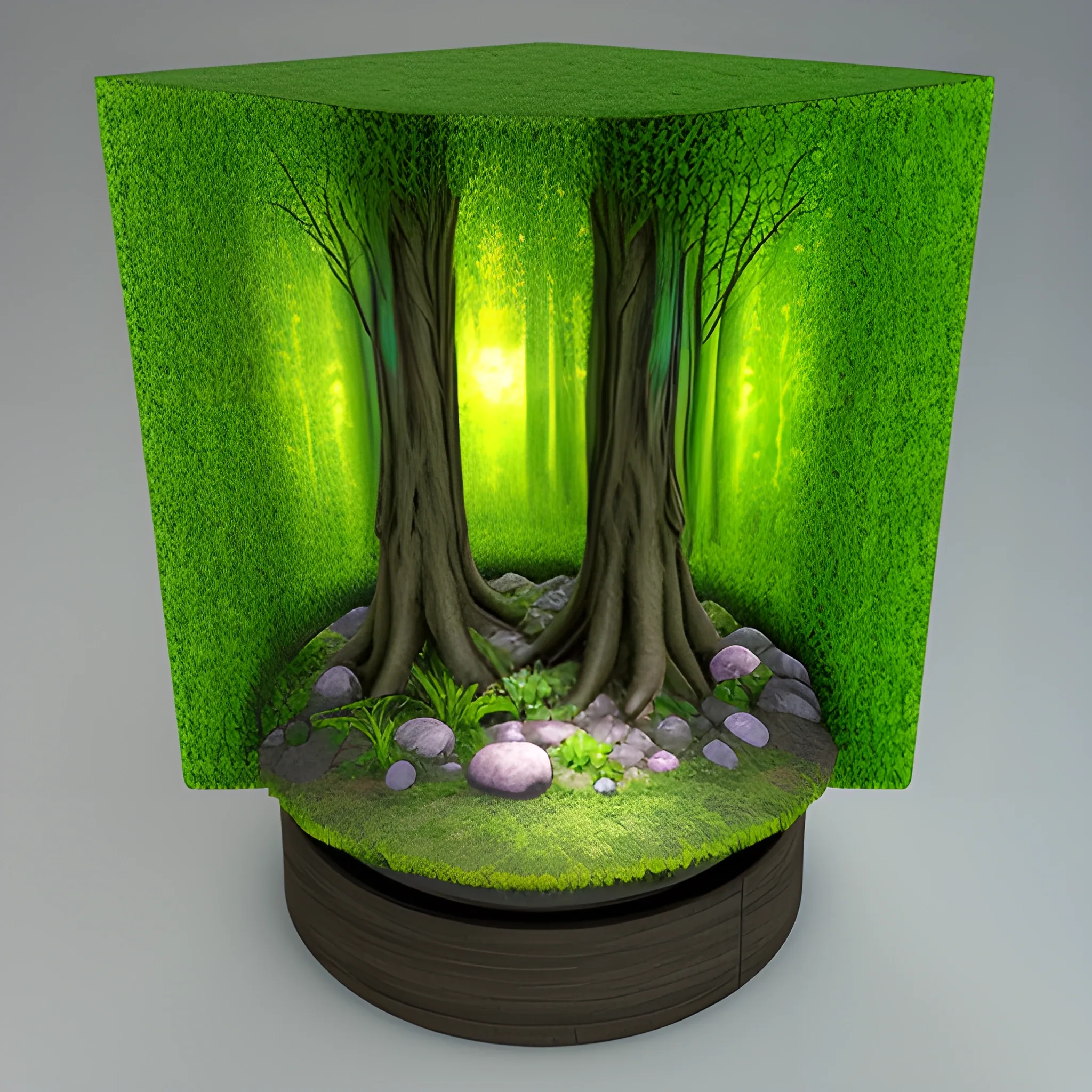Search Results for ritual
Explore AI generated designs, images, art and prompts by top community artists and designers.
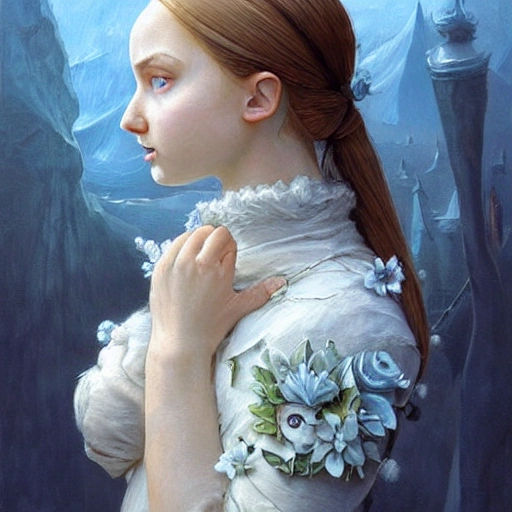
, Oil Painting , a girl portrait , side view , , art by Gediminas Pranckevicius , Hyperrealistic beautiful goodness ethereal white north pole art nouveau , fantasy , intricate flower designs , elegant , highly detailed , sharp focus , art by Artgerm and Greg Rutkowski and WLOP - princess of dead of tarot card The Star card shows a princess of dead standing in front of intricate magical stone energy portal.The lush green land around her seems to say that it is working. One foot is inside the water which shows the spiritual abilities and inner strength of the woman. The other foot on the ground shows her practical abilities and strengths. Behind her , there is a large central star surrounded by seven small stars which represent the chakras. There is bird standing at a tree branch which represents the holy ibis of thought. The Star's astrological correspondent is Aquarius.. ultra detailed , hyper realistic ,
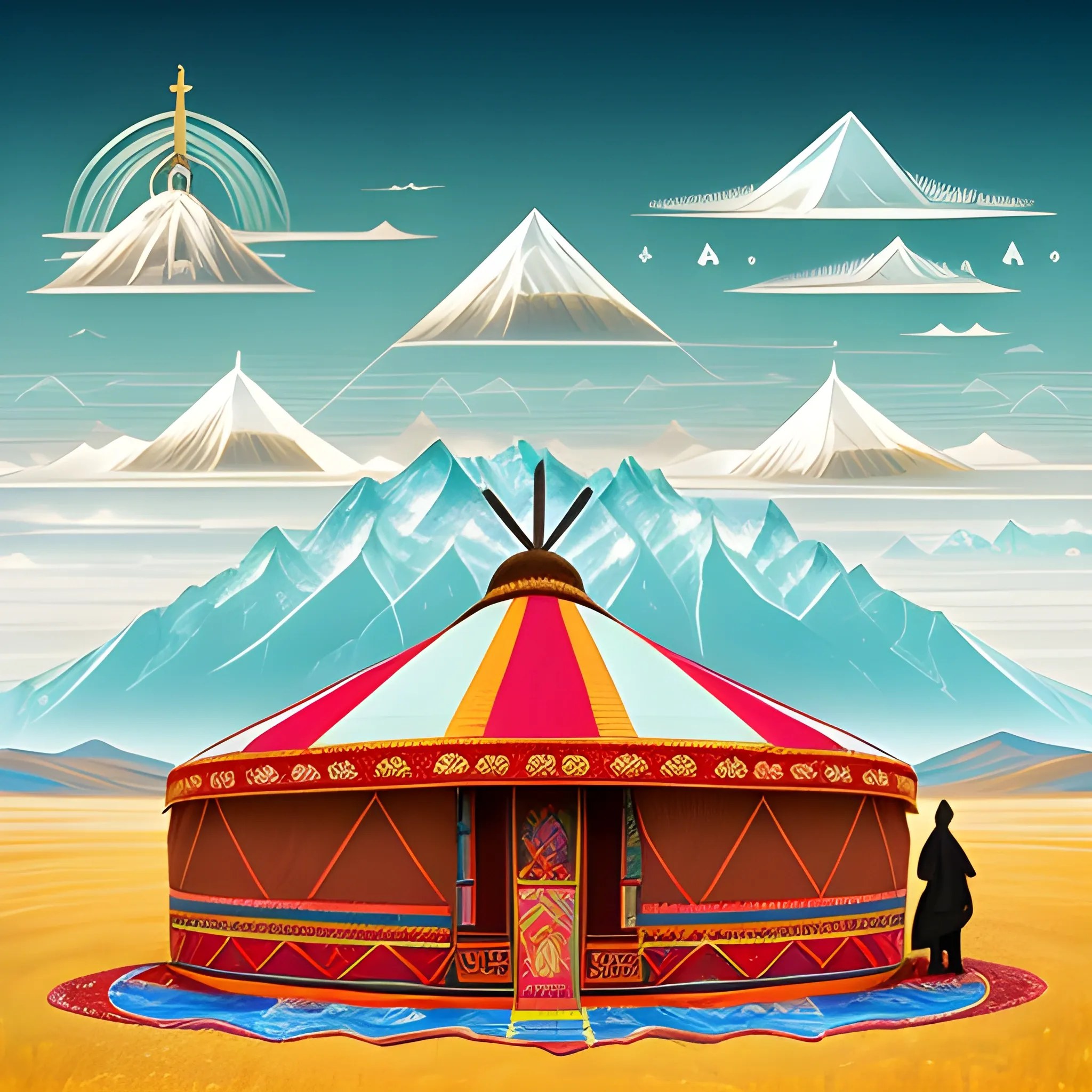
Create an evocative illustration depicting the rich cultural heritage of the Kazakh nomads and their spiritual connection with Tengrianism amidst the vast expanse of the steppe. Include key elements such as traditional yurts , horse-mounted nomads , ancient Tengrian symbols , and rituals. Infuse the artwork with a sense of unity between the nomadic lifestyle and the natural landscape , showcasing the spiritual beliefs and customs of the Kazakh people as they embrace their Tengrian roots in the heart of the steppe. , Trippy ,
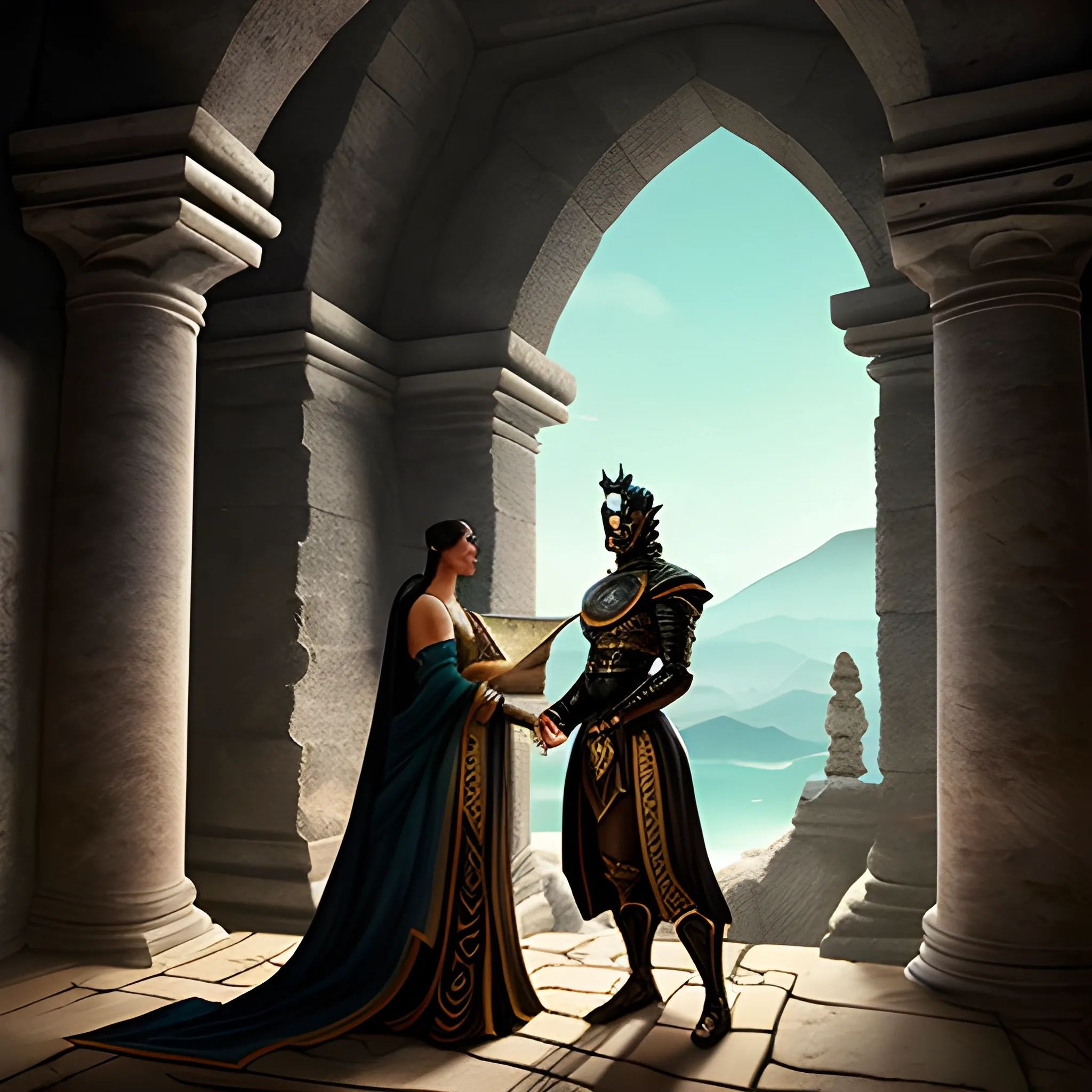
una imagen de un templo antiguo asiático con simbolos arcanos en su interior. La arquitectura es de piedra oscura y tiene simbología. La imagen evoca una sensación de misterio , magia y antigüedad. La piedra oscura y la simbología sugieren que el templo podría ser de una época antigua. La imagen muestra una gran cantidad de detalles arquitectónicos , como columnas , arcos y bóvedas. La simbología en la imagen es difícil de interpretar , pero parece tener un significado religioso , espiritual y de hechicería. La imagen es muy detallada y muestra una gran habilidad en la talla de piedra. La iluminación en la imagen es tenue y crea una atmósfera misteriosa y sombría. En el centro del templo , hay un maestro de 70 años de cabello largo con barba blanca , ojos al estilo de Margaret Keane , rostro calmado , hermoso , sonriente , sabio y hechicero. Él está hablando con su hijo Takumi , un niño de 10 años con cabello a los hombros negro y ojos al estilo de Margaret Keane. El templo está cubierto por helechos y maleza , y hay árboles en su interior. También hay cámaras secretas en el templo. Espero que esto te ayude a crear una historia o un poema inspirado en la imagen. ,
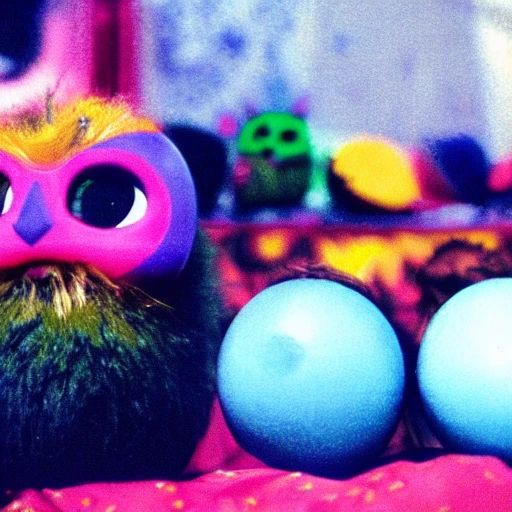
Scene from wickerman 1974 , furby , scifi , fantasy , colorful , kawaii , candy , gummybears , orbs , ritual ,
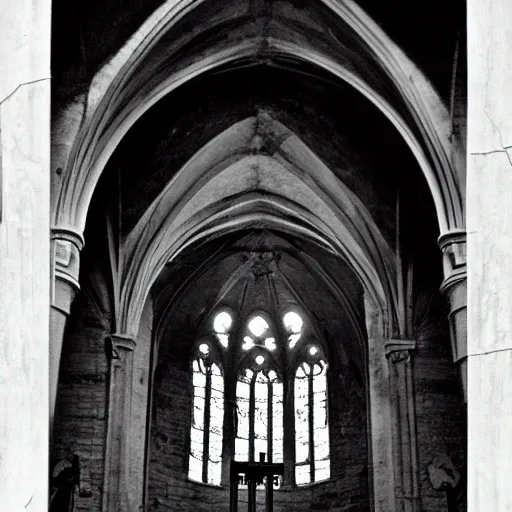
Subject: Abandoned and semi-ruined Romanesque church. Descriptions: Crumbling stone walls , faded frescoes , broken stained glass windows , debris scattered on the ground , altar in the distance. Environment descriptions: Dark and eerie , musty smell , silence interrupted only by occasional creaks and drips , beams of light shining through the holes in the roof. Mood/atmosphere descriptions: Haunting , desolate , melancholy , mysterious , spiritual. Artistic medium and techniques: Black and white photography , high contrast , sharp focus on the altar , use of natural light and shadows to create a dramatic effect. Artists , illustrators , painters , or movements: Ansel Adams , Henri Cartier-Bresson , Gothic art. Camera settings: Nikon D850 , 50mm lens , low aperture (f/2.8 or lower) for shallow depth of field , fast shutter speed (1/250 sec or faster) to freeze any movement. ,
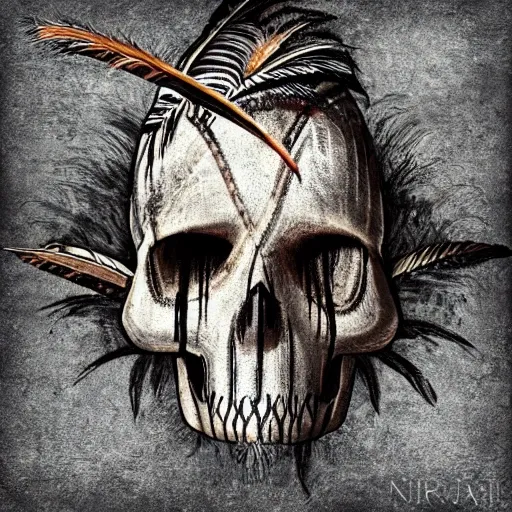
Skull mask , a weathered and worn texture with scratches and cracks , adorned with hand-painted tribal markings and feathers , in a lush jungle clearing with mist and shafts of sunlight breaking through the canopy , creating a mystical and ritualistic atmosphere. Digital illustration (Procreate with brush texture settings) with warm and earthy tones. --ar 9:16 --niji , 3D , Trippy , Cartoon ,
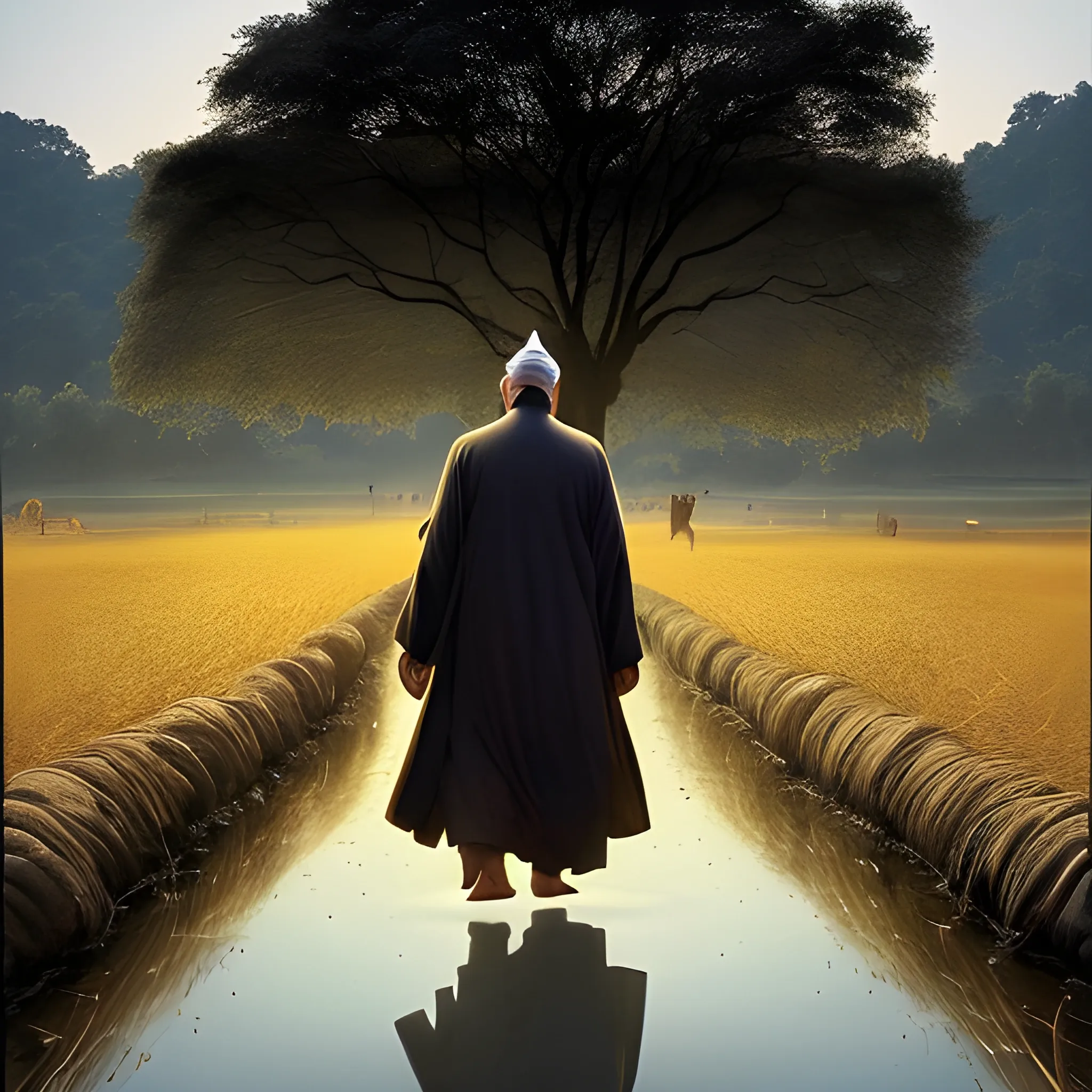
Title: "The Divine Humility: A Sacred Journey Through Haryana" In the tranquil village of Haryana , nestled amidst fields of golden wheat and the whispers of ancient trees , a sacred presence graced the unpaved streets. A figure , unassuming yet radiating with an ethereal light , walked with the quiet grace of humility. Appearing in the form of a mid-aged Supreme God , his face bore the wisdom of millennia , mirroring the serene countenance of the revered Mahatmas. Clad in a flowing black overcoat that whispered of ancient traditions , he wore upon his head a cone-shaped cap reminiscent of Maulana Rumi , the great mystic poet. With each step , the divine essence he carried mingled with the earthly air , creating an aura of sanctity that enveloped the village. The villagers , drawn by an invisible thread of reverence , gathered along the narrow paths , their hearts fluttering with anticipation and wonder. His attire , though simple , spoke volumes of spiritual elegance , each fold of his overcoat echoing tales of divine grace and timeless wisdom. The cone-shaped cap , gently curved at the top , seemed to reach towards the heavens , a symbol of his connection to the celestial realms. As he walked , the village came alive with a sense of sacredness , the very earth beneath his feet singing praises to his divine presence. The simplicity of his gait , the humility in his demeanor , spoke louder than any grand gesture could ever convey. The villagers , in awe of this divine visitor , followed in hushed reverence , their eyes alight with the reflection of his ethereal glow. Birds ceased their songs to listen to the rhythm of his footsteps , and even the ancient trees bowed in acknowledgment of his sacred journey. In this moment , amidst the rustic beauty of Haryana , the villagers felt a stirring in their souls—a gentle awakening to the infinite love and wisdom that flowed from the Supreme Being in their midst. The streets , once unpaved and humble , became a sacred path of enlightenment , paved with the footsteps of the Divine. And so , the village of Haryana was forever changed by the presence of the Supreme God in human form , walking among them with the simplicity of a sage and the radiance of a thousand suns. As he continued on his journey to meet his devoted followers , the village echoed with the whispers of prayers and the soft rustle of leaves , forever touched by the grace of his divine humility. ,

No words , 3 multi-color roses , growing through the mud , emerging from a rainy day , bold typography , earth-to-ethereal palette , texture overlays , spiritual iconography , gritty realism , ethereal abstraction , thought-provoking , high-impact , symbolic depth , subtle gradients , dynamic contrasts , very Trippy , Pencil Sketch ,

una imagen de un templo antiguo asiático con simbolos arcanos en su interior. La arquitectura es de piedra oscura y tiene simbología. La imagen evoca una sensación de misterio , magia y antigüedad. La piedra oscura y la simbología sugieren que el templo podría ser de una época antigua. La imagen muestra una gran cantidad de detalles arquitectónicos , como columnas , arcos y bóvedas. La simbología en la imagen es difícil de interpretar , pero parece tener un significado religioso , espiritual y de hechicería. La imagen es muy detallada y muestra una gran habilidad en la talla de piedra. La iluminación en la imagen es tenue y crea una atmósfera misteriosa y sombría. En el centro del templo , hay un maestro de 70 años de cabello largo con barba blanca , ojos al estilo de Margaret Keane , rostro calmado , hermoso , sonriente , sabio y hechicero. Él está hablando con su hijo Takumi , un niño de 10 años con cabello a los hombros negro y ojos al estilo de Margaret Keane. El templo está cubierto por helechos y maleza , y hay árboles en su interior. También hay cámaras secretas en el templo. Espero que esto te ayude a crear una historia o un poema inspirado en la imagen. ,
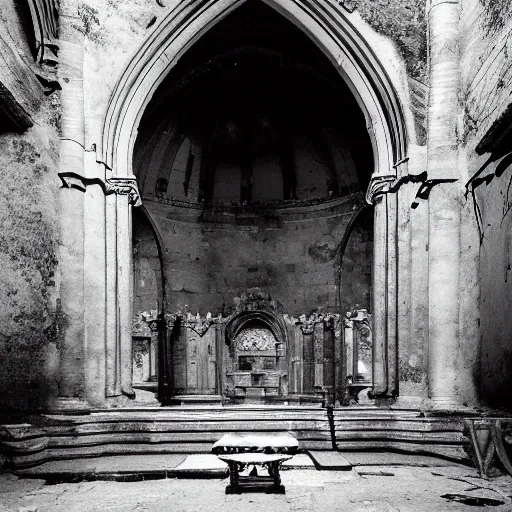
Subject: Abandoned and semi-ruined Romanesque church. Descriptions: Crumbling stone walls , faded frescoes , broken stained glass windows , debris scattered on the ground , altar in the distance. Environment descriptions: Dark and eerie , musty smell , silence interrupted only by occasional creaks and drips , beams of light shining through the holes in the roof. Mood/atmosphere descriptions: Haunting , desolate , melancholy , mysterious , spiritual. Artistic medium and techniques: Black and white photography , high contrast , sharp focus on the altar , use of natural light and shadows to create a dramatic effect. Artists , illustrators , painters , or movements: Ansel Adams , Henri Cartier-Bresson , Gothic art. Camera settings: Nikon D850 , 50mm lens , low aperture (f/2.8 or lower) for shallow depth of field , fast shutter speed (1/250 sec or faster) to freeze any movement. ,
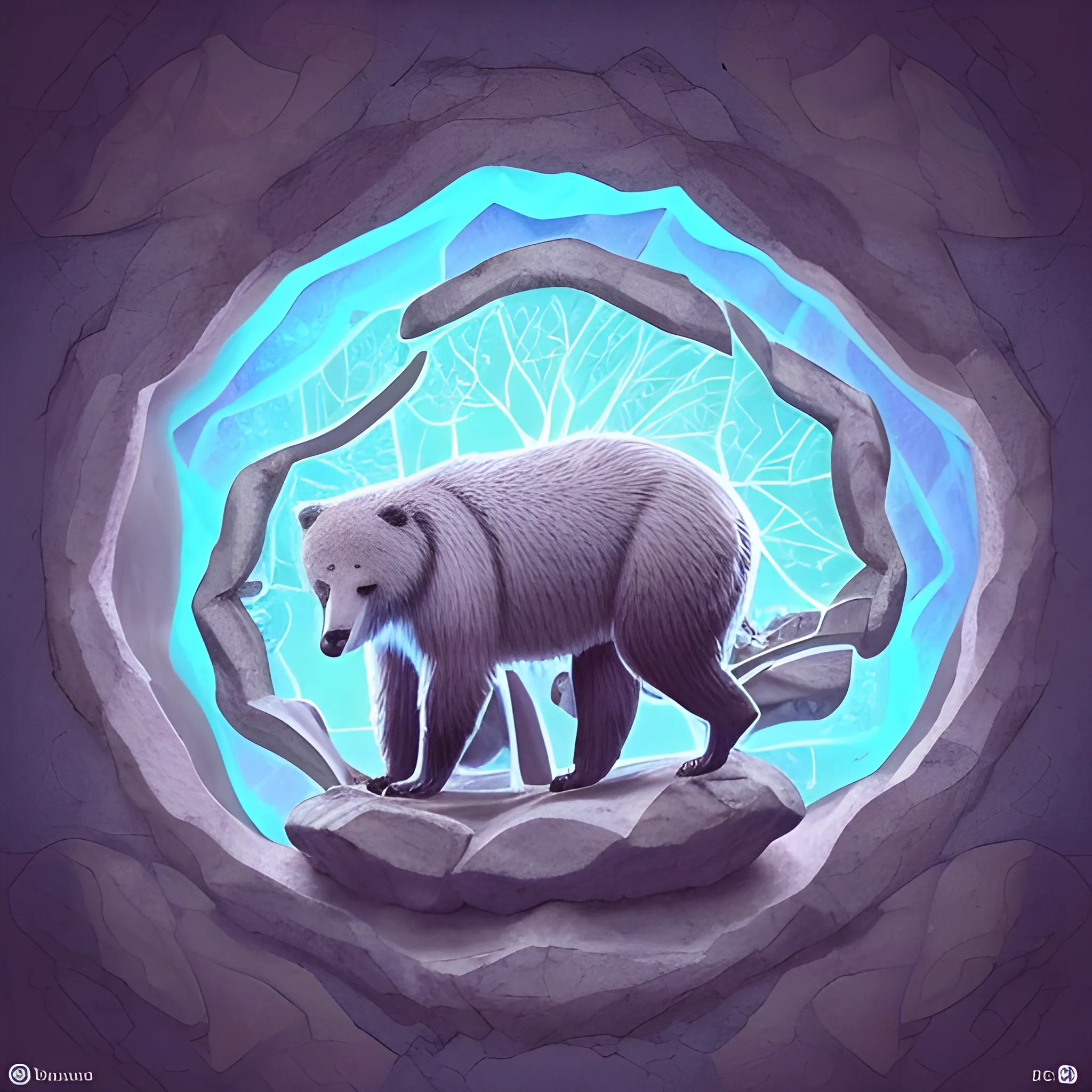
En primer plano , representa a un poderoso oso pardo con rasgos chamánicos , que encarnan la sabiduría y la fuerza interior. El oso debe usar accesorios tradicionales de chamán como plumas , cuentas y símbolos que representen el conocimiento antiguo. Junto a él , una figura indígena refleja al oso , simbolizando una profunda conexión espiritual. Ambos están arraigados en un árbol con raíces intrincadas , que representan el crecimiento , la introspección y la conexión entre los reinos terrenal y espiritual. El fondo debe evocar el ambiente frío y helado de Cueva ICE , simbolizando el desafiante pero transformador viaje interior. Use tonos fríos de azules y blancos para representar el frío , mezclándose con suaves verdes etéreos para simbolizar la curación y el rejuvenecimiento. Incorpora elementos sutiles que representan PNL (conexiones neuronales) , coaching (manos guías o caminos) e hipnoterapia (un patrón en espiral que se desvanece en el fondo) de una manera muy implícita , casi oculta , asegurando que el enfoque principal permanezca en el oso chamánista y el ambiente frío e introspectivo. La imagen general debe evocar un sentido de profunda exploración espiritual , el aprovechamiento de la fuerza interior y el viaje hacia el autodescubrimiento y la transformación dentro del abrazo helado de Cueva ICE. , Boceto a lápiz ,
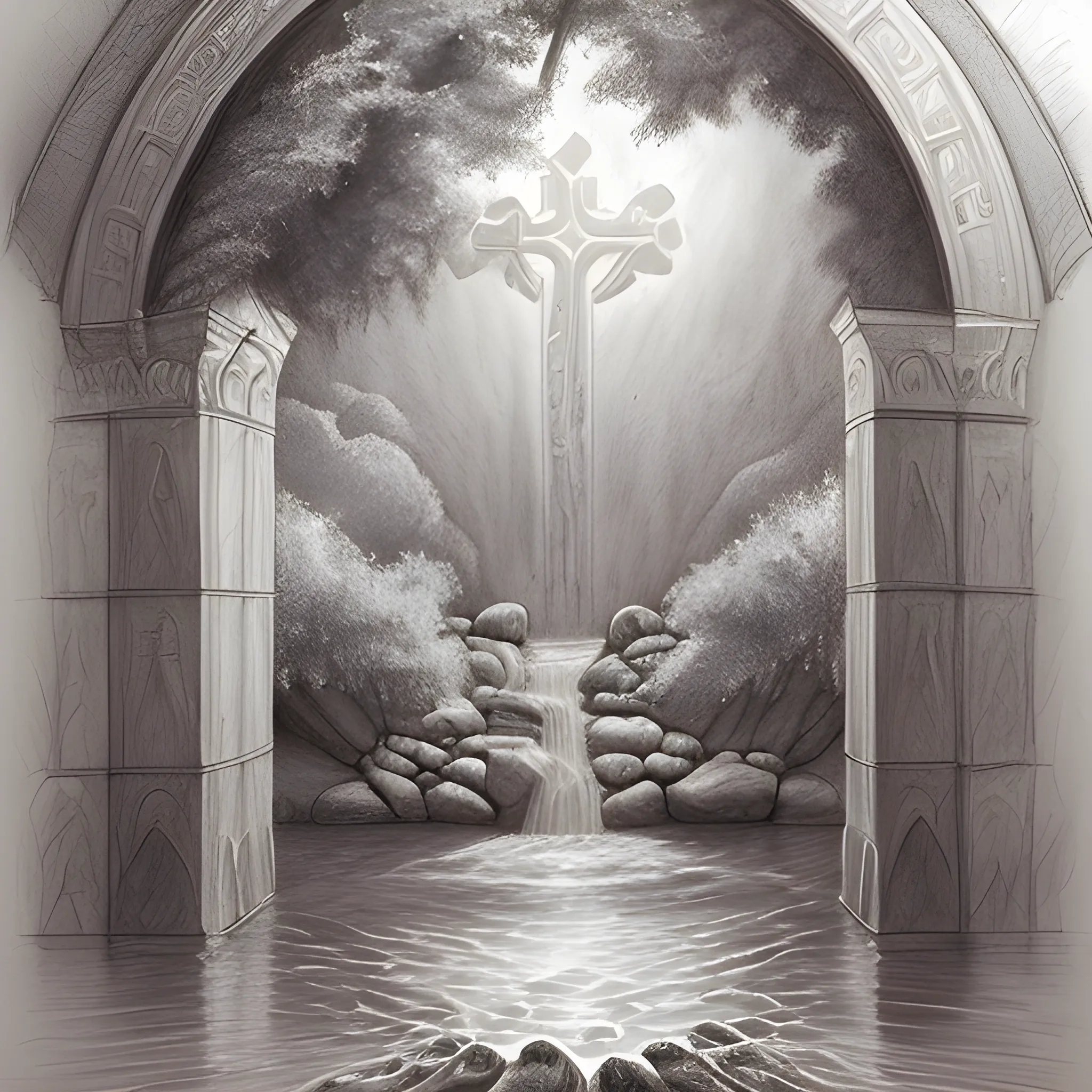
Draw heaven from a spiritual theological point of view , as the Bible describes it when Jesus comes in glory and majesty and takes his chosen people. It must have the tree of life , the river of life , streets of gold and the gates of the city with the precious stones that the Bible says. , Pencil Sketch , Oil Painting , Water Color ,
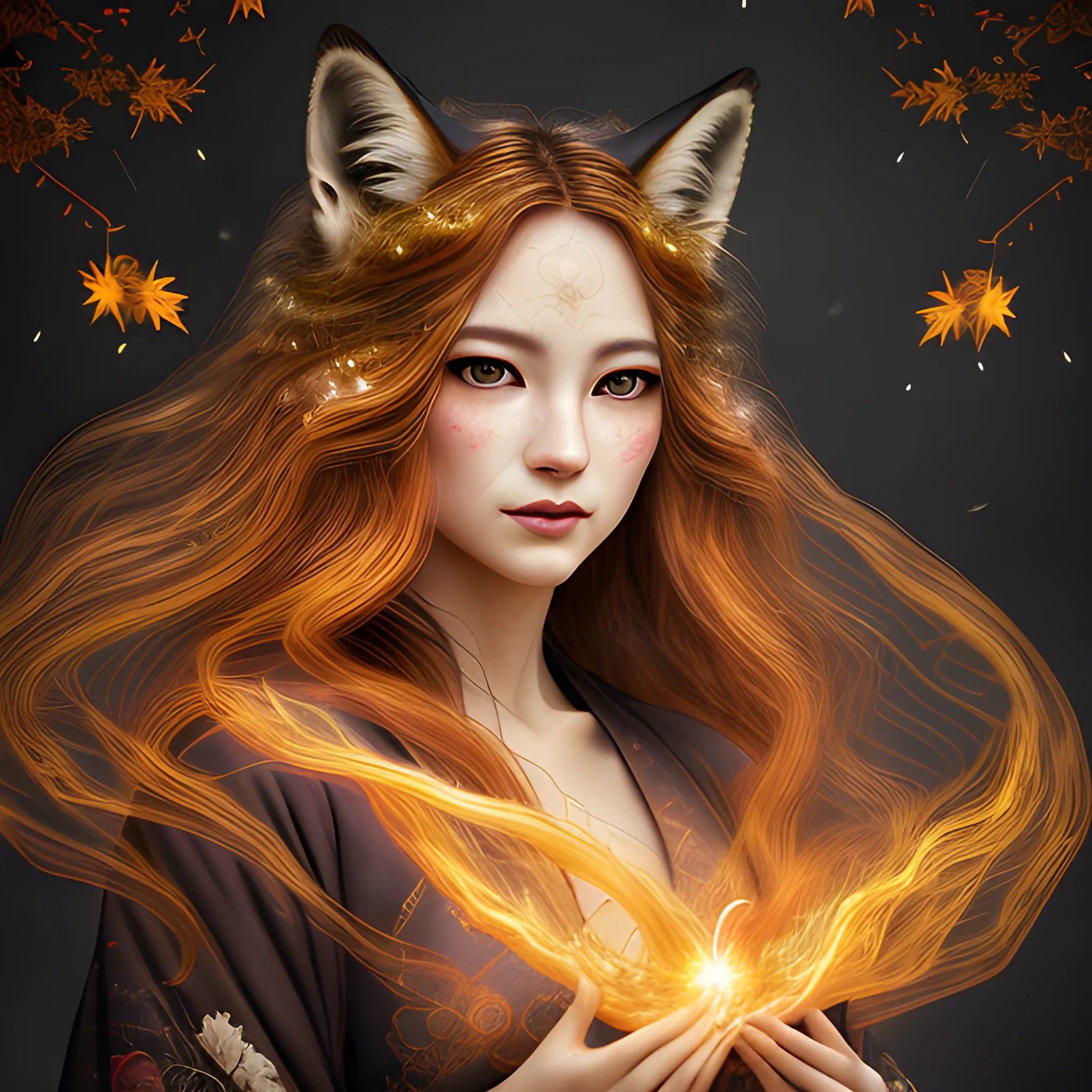
rfktrstyle (best quality , 4k , 8k , highres , masterpiece:1.2) , ultra-detailed , (realistic , photorealistic , photo-realistic:1.37) , black and white , mythical creature , kitsune , Japanese folklore , fox , shape-shifter , vibrant colors , ethereal atmosphere , dreamlike scene , misty forest , enchanting moonlight , ancient shrine , golden ornate kimono , graceful movements , beautifully detailed eyes , long flowing hair , cunning smile , delicate whiskers , supernatural aura , blurring boundaries between human and fox , spiritual connection , natural harmony , whispering leaves , dancing shadows , illuminated lanterns , intricate patterns , celestial orbs , supernova explosion , artistic brush strokes , traditional art style , magical transformation , hidden secrets , alluring power , sense of mystery , nighttime rendezvous , serene expression , transcendent beauty , folkloric charm , transformation into human form , subtle elegance , vibrant red maple leaves , golden fox fire , mesmerizing gaze , fluid movements , intriguing tales of trickery and mischief. ,
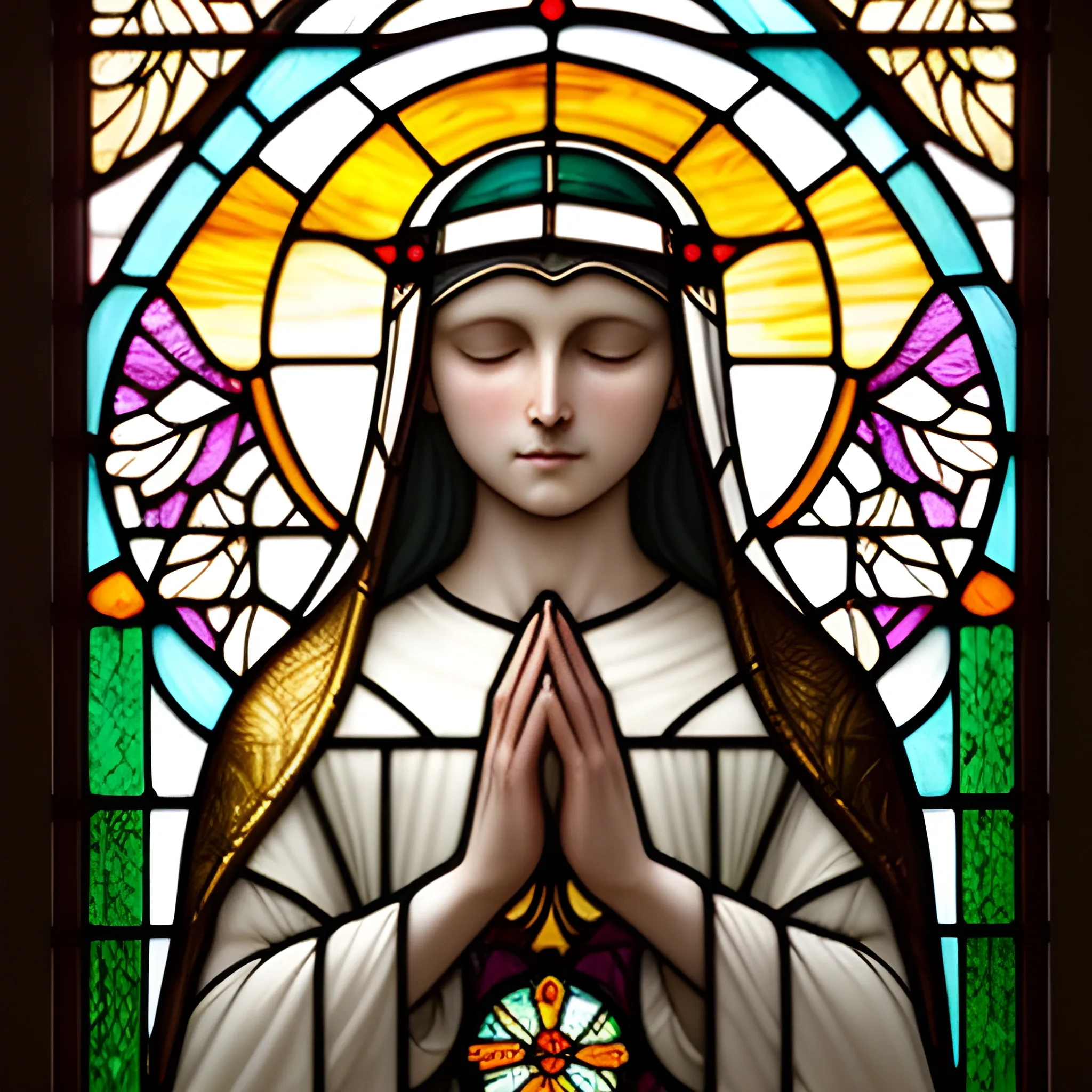
The image portrays a solemn and serene nun in prayer , captured in the timeless beauty of a stained glass artwork. She stands at the center , her eyes gently closed and hands devoutly clasped , embodying a deep spiritual reverence. Her traditional habit flows gracefully , detailed with folds and shadows that add to the realism of the portrayal. Behind her , a halo of golden light radiates , symbolizing her holy devotion. Above and around her , angels descend gently from the heavens , their wings outstretched and adorned with an array of soft , pastel colors that give a sense of their ethereal and divine nature. Each angel carries an aura of peace and benevolence , contributing to the sanctity of the scene. The background features a lush landscape with hints of a sunrise or sunset on the horizon , suggesting the promise of hope and renewal. The stained glass divides light and color into intricate patterns , with lead lines meticulously defining every detail , from the angels' feathers to the nun's contemplative expression. The bottom of the artwork is adorned with floral motifs , adding an element of earthly beauty to the celestial theme. This stained glass masterpiece evokes a sense of tranquility and divine grace , perfect for inspiring contemplation and reverence. ,

